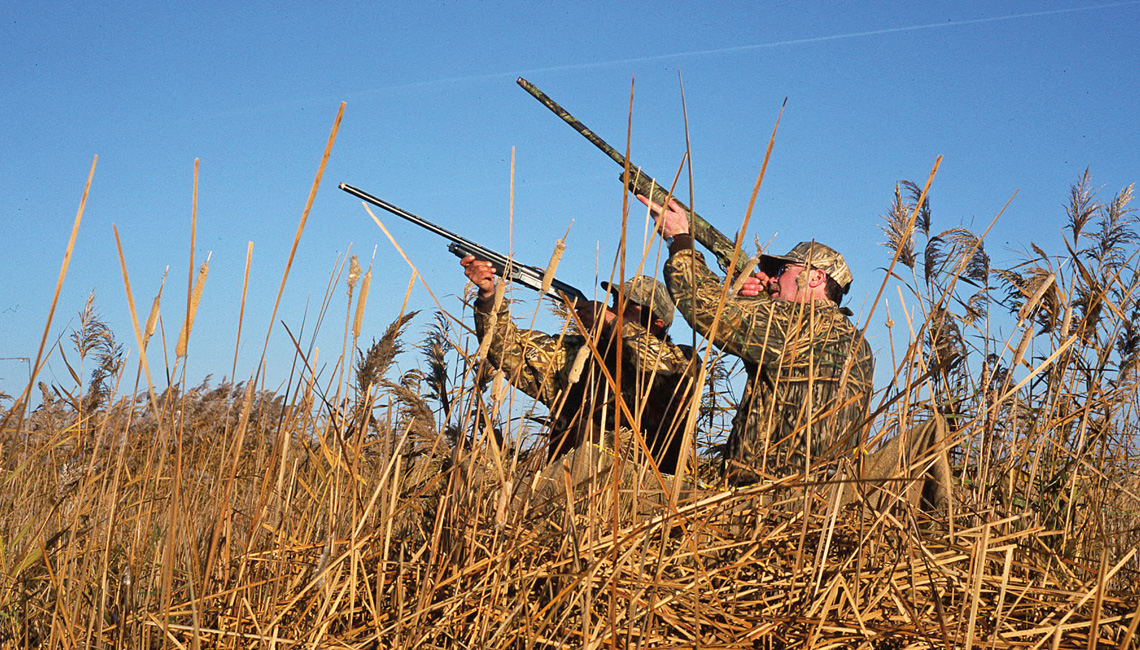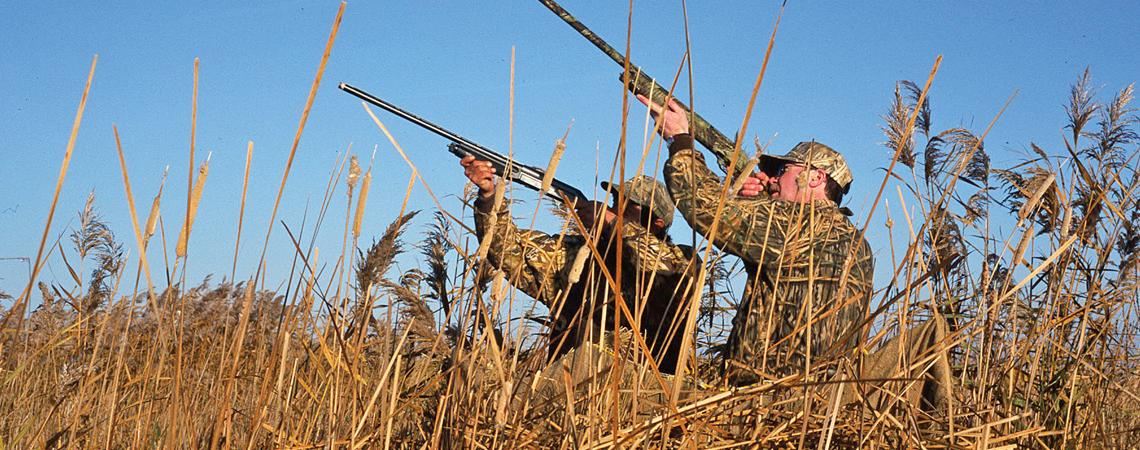"There’s a singular reason that some of the best Lake Erie marshes in Ohio have been saved from destruction. One reason, two words: duck hunters. It sounds blunt and oversimplified, but from the viewpoint of wildlife, duck hunters saved the marshes.”
You might expect that to have been uttered by a waterfowl hunter. Kenn Kaufman, however, is not a hunter and never has been. Rather, he is one of North America’s best-known birding experts. The author of a dozen field identification guides and natural-history reference books, Kaufman also wrote the 1997 birding classic Kingbird Highway. He and his wife, Kimberly, the executive director of Black Swamp Bird Observatory in Oak Harbor, live in northwest Ohio.
Had it not been for Ohio’s duck hunters, much of Ohio’s marshland, which is so important to both birding and hunting today, may well have been lost to development.
During settlement, the Buckeye State lost an estimated 95% of its original wetlands, much of that the Great Black Swamp, which once covered nearly all of northwestern Ohio and northeastern Indiana. That gigantic region was a haven for wildlife of all sorts — not just waterfowl — as the water slowly drained into the vast marshes that ringed the western edge of Lake Erie from Toledo to Sandusky.
But what saved at least some of those marshes from becoming yet more farmland or other types of development were private duck hunting clubs, whose members banded together to keep the lakeside habitat in its original state year after year, decade after decade.
The price for such management was not small, however, and simple economics gradually took its toll. One club after another was eventually forced to sell its property. Fortunately, state and federal governments were ready to buy. Waterfowl conservation groups such as Ducks Unlimited helped, too. Today, many of those historic shooting grounds are now national wildlife refuges and state wildlife areas, open to both birders and hunters.
Two of the largest are Magee Marsh Wildlife Area and Ottawa National Wildlife Refuge, both located southeast of Toledo along State Route 2. Adjacent to one another, the two refuges make up the largest wetland complex in the state, encompassing nearly 7,000 acres. Other public wetlands in the area include Maumee Bay State Park, Howard Marsh, Metzger Marsh, Navarre Marsh, Pipe Creek, and Mallard Club Marsh wildlife areas.
Those tens of thousands of wetland acres would have been irretrievably lost had it not been for waterfowl hunters. The duck clubs’ original intentions may well have been self-serving — after all, most members just wanted to shoot ducks — but nevertheless, the long-term benefits of those marshes for wetlands wildlife today have proven inestimable.
“Whether birders like it or not,” says Kaufman, “it’s a fact that our sensational birding today in northwest Ohio rests on a foundation of habitat built by duck hunters. Magee Marsh, for instance, famous around the world as a place to see spring warblers and other songbirds, was saved because it was a duck club before it was turned over to the state of Ohio.”
Some 30 private duck hunting clubs — such as Winous Point Shooting Club — still exist in the Lake Erie region, maintaining thousands of acres of marsh, providing habitat for not only waterfowl and other migratory game birds but all types of wildlife. So, if you have ever enjoyed a day birding the Lake Erie marshes, thank a duck hunter. And if you’ve not yet taken the opportunity to experience this pristine natural area of our state, make plans to go.
Wildlife conservation history is important because it provides perspective and a better understanding and appreciation for the wild species we enjoy today.
W.H. “Chip” Gross is Ohio Cooperative Living’s outdoors editor. Got a question you’d like to ask Chip? Send an email to whchipgross@gmail.com.
Buy a duck stamp?
Even if you’re not a hunter, you can help support waterfowl management in Ohio by purchasing a state/federal duck stamp. The sale of federal duck stamps has raised more than $1.1 billion for wildlife conservation since its inception in the 1930s, preserving some 6 million acres of wetland habitat nationwide.











